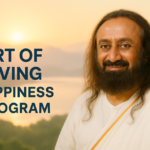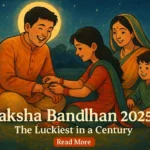The night of 7th September 2025 is going to be truly special for sky lovers across India and many parts of the world. A total lunar eclipse, popularly called a Blood Moon, will be visible. The Moon will gradually turn a deep red shade as it passes through Earth’s shadow, creating one of the most breathtaking celestial shows you can witness with your naked eyes.
If you’ve ever wondered why the Moon turns red, what time you can see it, how to watch it, and what it means in Hindu tradition, this detailed guide has got you covered. Let’s dive in!

What Exactly Is a Bloody Lunar Eclipse?
A lunar eclipse happens when Earth comes directly between the Sun and the Moon. When this alignment is perfect, Earth’s shadow falls on the Moon.
During a total lunar eclipse, the Moon passes completely into Earth’s darkest shadow (umbra). Instead of disappearing, it glows in shades of red and copper. This happens because Earth’s atmosphere bends and filters sunlight, scattering the blue light but allowing the red tones to pass through and reach the Moon.
This reddish glow is why we call it a Blood Moon. The exact shade can vary from bright orange to deep crimson depending on dust, clouds, and pollution in Earth’s atmosphere that night.
Timings of the Bloody Lunar Eclipse in India (IST)
Here’s the step-by-step timeline for the Bloody Lunar Eclipse, in Indian Standard Time:
- Penumbral phase begins – 8:58 PM (7th Sept)
- Partial eclipse begins – 9:58 PM
- Total eclipse begins – 11:00 PM
- Maximum eclipse (deepest red) – Around 11:42–11:45 PM
- Total eclipse ends – 12:22 AM (8th Sept)
- Partial eclipse ends – 1:30 AM
- Penumbral ends – 2:25 AM
So, the most dramatic red Moon will be visible between 11:00 PM and 12:22 AM, giving you more than an hour of stunning totality.
Where Will the Bloody Lunar Eclipse Be Visible?
This eclipse will be visible in:
- India (full visibility, weather permitting)
- Much of Asia, Africa, Australia, and parts of Europe
Unfortunately, most of North and South America will miss this one as the Moon won’t be above the horizon there.
For Indians, this is a perfect opportunity, all you need is a clear sky!
How to Watch the Bloody Lunar Eclipse (Safely)
Here’s the best part: lunar eclipses are 100% safe to watch with the naked eye. Unlike solar eclipses, you don’t need any protective glasses.
Tips for the best experience:
- Find an open spot with a clear view of the sky (less light pollution = better).
- Use binoculars or a telescope if you have one — you’ll see the Moon’s craters glowing in red.
- For photographers:
- Use a tripod for stability.
- Start with settings like ISO 400–800, shutter 0.5–2s, aperture f/5.6 during totality.
- Adjust as the Moon brightens or darkens.
- Shooting in RAW format will let you bring out colors better when editing.
And if clouds spoil your view, don’t worry — many observatories and astronomy groups will stream it live online.
Lunar Eclipse in Hindu Belief and Traditions
In Hindu culture, eclipses are not just astronomical events — they carry deep spiritual and cultural significance. The lunar eclipse is called “Chandra Grahan”, and traditions around it have been followed for centuries.
Sutak (Inauspicious Period)
- The Sutak period begins about 9 hours before the eclipse (for adults) and ends once the eclipse is over.
- During Sutak, many families avoid cooking, eating, or starting new ventures.
Common Practices
- No food/cooking: Food is usually covered or avoided during the eclipse. Some people place tulsi leaves in food as a symbol of purification.
- Pregnant women precautions: Traditionally, pregnant women are advised to stay indoors to avoid any negative influence.
- Chanting and meditation: Spiritual activities like chanting mantras (e.g., Om Namah Shivaya, Gayatri Mantra) or meditating are believed to bring peace and positivity.
- Bathing and cleansing: After the eclipse, it’s common to take a bath and clean the house/temple space before resuming normal activities.
- Charity and donations: Donating food or clothes after the eclipse is considered highly auspicious.
While these customs are rooted in tradition, many also see the eclipse simply as a time of reflection and spiritual renewal.
Do’s and Don’ts During the Eclipse
Do’s
✔ Step outside and enjoy the beauty of the eclipse.
✔ Use binoculars/telescopes for a closer look.
✔ Spend time in meditation, chanting, or journaling.
✔ Take photos — it’s a once-in-a-lifetime view!
✔ Follow Sutak rules if your family observes them.
Don’ts
❌ Avoid eating/cooking during Sutak (if you follow traditional customs).
❌ Avoid starting new work, travel plans, or major decisions.
❌ Pregnant women are often advised not to look at or step out during the eclipse in many communities.
❌ Don’t panic if the Moon looks unusual, it’s a natural, harmless phenomenon.
How Rare Is Bloody Lunar Eclipse?
Total lunar eclipses don’t happen every year in a given location. While some years may have multiple eclipses, it can be years before you get another clear, long-lasting totality like this one. That’s why the 7–8 September 2025 Blood Moon is so special — over 80 minutes of total red glow visible across India!
Final Thoughts on Bloody Lunar Eclipse
The Bloody Lunar Eclipse of 2025 is not just an astronomical wonder but also a moment filled with cultural, spiritual, and personal meaning. Whether you watch it purely as a science enthusiast, capture it with your camera, or observe it following Hindu traditions, it’s an event worth marking on your calendar.
So, set your alarms for 11:00 PM on 7th September 2025. Step outside, look up, and witness our Moon turn into a glowing red orb under Earth’s shadow. Clear skies to you!
Frequently Asked Questions (FAQ) on Bloody Lunar Eclipse 2025
1. What is a Bloody Lunar Eclipse?
A Bloody Lunar Eclipse, or Blood Moon, is a total lunar eclipse where the Moon turns red as it passes through Earth’s shadow. The red glow happens because Earth’s atmosphere bends sunlight, filtering out the blue and letting only the reddish hues reach the Moon.
2. When is the Bloody Lunar Eclipse in 2025?
The eclipse will occur on the night of 7th September 2025 and continue into the early hours of 8th September 2025.
- Total eclipse phase (Blood Moon): 11:00 PM (7 Sept) to 12:22 AM (8 Sept) (IST).
- Peak visibility at around 11:42–11:45 PM IST.
3. Can we see the lunar eclipse from India?
Yes! The entire eclipse will be visible across all parts of India, weather permitting. In fact, India is among the best places to witness this eclipse in full.
4. Is it safe to watch the lunar eclipse with naked eyes?
Absolutely. Unlike a solar eclipse, a lunar eclipse is 100% safe to watch with the naked eye. You don’t need glasses, filters, or any special equipment. Binoculars or telescopes simply enhance the view.
5. Why does the Moon turn red during the eclipse?
The red color appears because of Rayleigh scattering in Earth’s atmosphere. Sunlight bends around Earth, filtering out blue light and allowing only red/orange wavelengths to reach the Moon’s surface. This creates the Blood Moon effect.
6. What is Sutak, and when does it start for this eclipse?
In Hindu tradition, Sutak is the inauspicious period observed before and during an eclipse. For a lunar eclipse, Sutak usually begins 9 hours before the eclipse starts and ends once the eclipse is over. For this eclipse, Sutak will likely begin in the afternoon of 7th September 2025 and end after 2:25 AM on 8th September. (Exact timings can vary by region — check your local panchang.)
7. What should one avoid during the eclipse as per Hindu beliefs?
- Cooking and eating food.
- Starting new work or religious ceremonies.
- Stepping outdoors for pregnant women.
- Using sharp objects or cutting nails (in some traditions).
These are traditional beliefs, and practices may vary by family and community.
8. What should one do during the eclipse according to Hindu traditions?
- Engage in chanting mantras or meditation.
- Cover stored food with tulsi leaves.
- Take a bath before and after the eclipse.
- Perform puja or charity after the eclipse ends.
9. Will the eclipse affect pregnant women?
Traditionally, pregnant women are advised to stay indoors during an eclipse to avoid negative effects. Scientific evidence does not support harmful effects, but many families still follow these customs for peace of mind.
10. Can I take photos of the Blood Moon with my phone?
Yes! Modern smartphones can capture good eclipse shots, especially if they have night mode or manual camera settings. Use a tripod for stability, and adjust exposure for better detail. DSLRs or mirrorless cameras with telephoto lenses will capture even more dramatic photos.
11. Will the Moon look red everywhere in India?
Yes, but the shade of red may differ depending on your local atmosphere. Places with more pollution or cloud cover may see a darker red or even brownish Moon.
12. How long will the Bloody Lunar Eclipse last?
The total phase (Blood Moon) will last for about 1 hour and 22 minutes (from 11:00 PM to 12:22 AM IST). The entire eclipse, including penumbral and partial phases, will last for more than 5 hours.
13. How rare is Bloody Lunar Eclipse?
Total lunar eclipses happen roughly every 2–3 years, but not all are visible from India. Having such a long total eclipse clearly visible across the entire country is relatively rare, which makes this one extra special.
14. Do I need to travel to a special location to see Bloody Lunar Eclipse?
No. As long as you have a clear sky and an open horizon, you’ll be able to see it right from your home terrace, balcony, or an open field. For the best view, avoid areas with too much artificial light.
15. What if it rains or is cloudy?
If clouds block your view, you can watch live streams from global observatories and astronomy groups. Websites like Time and Date, Space.com, and Virtual Telescope Project usually broadcast such eclipses in real time.
For Latest Spirituality Updates and Information, Follow Popnewsblend.com

Hi, I’m Prashant Jain — a curious soul, storyteller, and content creator at heart.I’ve always been drawn to the world of entertainment, travel, sports, health & lifestyle — not just as a writer, but as someone who genuinely lives these experiences. Whether I’m binge-watching the latest OTT series, exploring offbeat spiritual destinations in India, or diving deep into wellness routines and cricket match insights, I love sharing what I discover with like-minded readers.
PopNewsBlend is my way of blending personal journeys with meaningful stories — ones that inform, inspire, and keep you ahead of the curve. Everything I write comes from real observations, hands-on experiences, and a deep passion for understanding the world around us.
Discover more from Popnewsblend
Subscribe to get the latest posts sent to your email.







